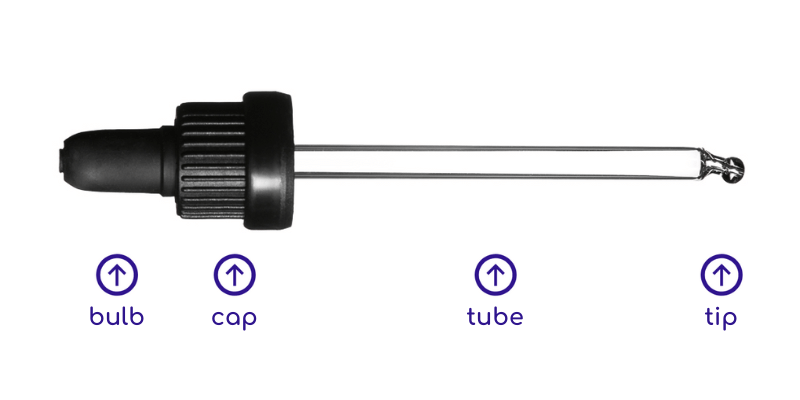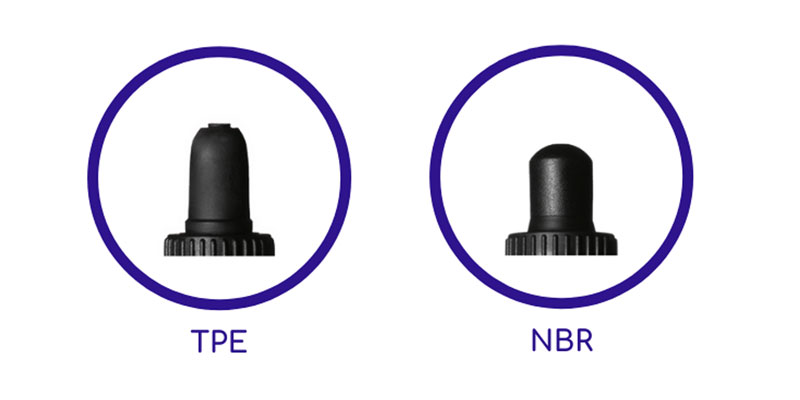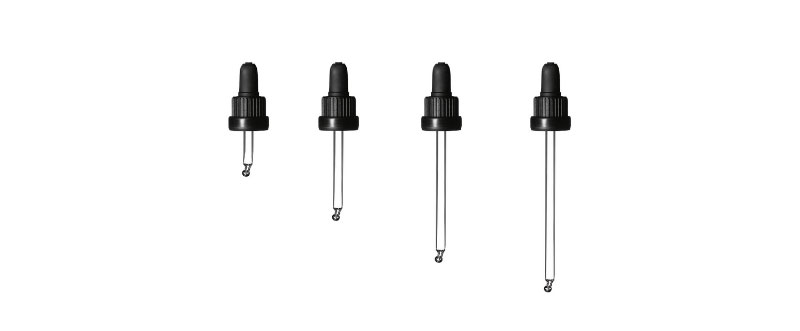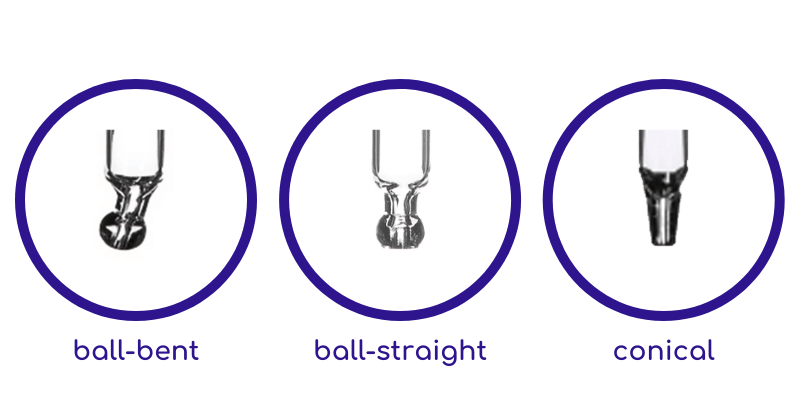Picking the Perfect Pipette Dropper
Pipette droppers are the ideal way for dosing a liquid precisely, while avoiding contamination. This is especially relevant for nutrition products, essential oils, skincare cosmetics, CBD products, and other natural healing remedies.
A pipette dropper consists of four different parts, which can be configured to suit your product and the usage. These steps make you an expert in minutes. However, even as an expert, it’s wise to ask the assistance of our sales representative and to request samples.

1) Bulb Material & Dosing
The bulb is made of rubber and controls the dosage. So, simply put, the bigger the bulb, the bigger the dosage. The bulb is available in different sizes (dose: 0.4 ml, 0.7 ml, and 1.0 ml) and indicates how many milliliters can be sucked in by squeezing it.

- Thermoplastic elastomer (TPE)
TPE bulbs are ideal for products that are either alcohol-based or have low acidic levels, because these are not harmful to the rubber. Pipettes made from chlorine butyl (CB) have similar properties. - Nitrile butyl (NBR)
The NBR bulb is specially made for oil-based or highly acidic liquids.
2) Cap Design & Function
The cap is screwed onto the bottle. When choosing, it’s important to look at the thread of the cap, like DIN18 or 18/415. These codes refer to the diameter and screw thread of the bottle, so that it fits perfectly. Caps come in different series and styles, each with its own functions. For example, tamper-evident means that they have a plastic ring at the bottom of the cap that breaks when it’s first opened. It’s like a quality control for the customer, an intact ring means that the bottle has never been opened.

- Series II
The tamper-evident Series II closures are made from a single mold, with 4-6 ridges on the side. - Series III
The tamper-evident Series III closures have a thicker rim and are made from multiple molds. This pipette cap has a stepped design. - Child-resistant
The tamper-evident child-resistant cap needs to be pushed down and turned to open for usage. This additional barrier reduces the possibility of children ingesting unsafe liquids. - Push-button
The pipette is dosed by a button, instead of squeezing a bulb. Giving it a totally different look and experience, ideal for use with cosmetics.
3) Tube Length
A pipette must fit the bottle perfectly. If the tube is too long, it can easily break or won’t fit at all. If the tube is too short, it’s difficult to extract all the precious liquid from the bottom of the bottle. So, in almost all cases, we have named the corresponding bottle.

4) Tip Type
The finishing touch is literally the tip, it defines the customer dosing experience. Is the dosage an exact drop, or a volume shot? Choose your tip wisely, ball, straight, bent, or conical?

- Bent ball tip
The bent ball tip is perfect for dosing drop by drop. The bent tip has another advantage, allowing you to reach the liquid in the bottom corners of the bottle. - Straight ball tip
The straight ball tip enables you to dose, drop by drop, on a specific spot. - Conical tip
This tip is used when the product needs to be dosed in milliliters rather than drops. This tip is also available with gradation (measuring markings on the tube).
